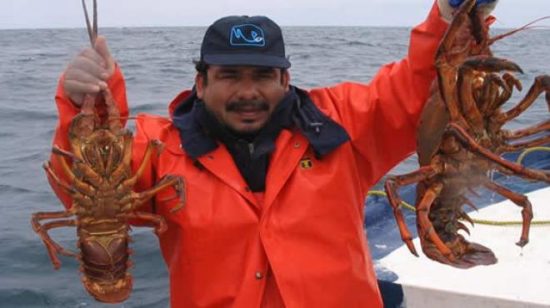Cinvestav researcher, Silvia Salas Márquez, commented that the project came from the initiative of lobster fishermen of San Felipe, Rio Lagartos, El Cuyo and Celestún.
In an interview with the Information Agency of the National Council of Science and Technology (Conacyt, for its acronym in Spanish), the specialist stressed that despite the failure of previous attempts, the success achieved between 2005 and 2006 has motivated the participants to consider the possibility of replicating it in the present.
“Artificial shelters have been widely used in Caribbean regions, but the government’s first attempt to implement it the country (just over two decades ago) was not accepted by fishermen,” she recalled.
However, he stressed that in this case it was the fishermen who approached Cinvestav, which is gratifying, being able to do the work together, because they know their environment and tell you what works and what does not.
The researcher stressed that in order to improve the conditions of the fishery in a comprehensive way, the implementation of the project included the characterization of seabed types in the main fishing areas; The construction and induction of hostels known also as Cuban houses.
As well as the promotion of courses and talks among fishermen with the purpose of improving their selective fishing skills through the artificial refuges and the improvement of the infrastructure of the cooperatives to promote the certification of their reception plants.
Salas Márquez explained that the execution of the Cuban houses was carried out jointly with more than 500 fishermen from six cooperatives of the coast of Yucatan, to solve the problems presented by the previous refuges, such as the sinking and the low durability of the material.
In this way, he emphasized that shelters were designed with skates to prevent their sinking, because the height of the previous refuges allowed diverse marine predators to enter, its size was diminished to correspond to the proportions of a lobster.
“We also made a mapping of the bottom by diving to find the suitable places to place the shelters. Not only was the design, but knowing where to place it so there is a better opportunity to operate efficiently, ” she said.
After elaborating several prototypes, four thousand devices were constructed and distributed in the east zone and 100 in the west zone of the Yucatecan coast, she specified.
Subsequently, she mentioned that the sites were visited to record the colonization processes, where lobster occupation was observed almost immediately at the end of the first month.
“The fishermen say that it works; We worked to follow up for a while and now we see that they have already been totally colonized by sessile organisms (that do not move and are incrusted), so the fishermen themselves have shown an interest in seeking resources to replicate the project, ” she said.
Source: notimex.gob.mx


